#The moons of Uranus are fascinating enough on their own that we should send a flagship mission out there
“#The moons of Uranus are fascinating enough on their own that we should send a flagship mission out there”
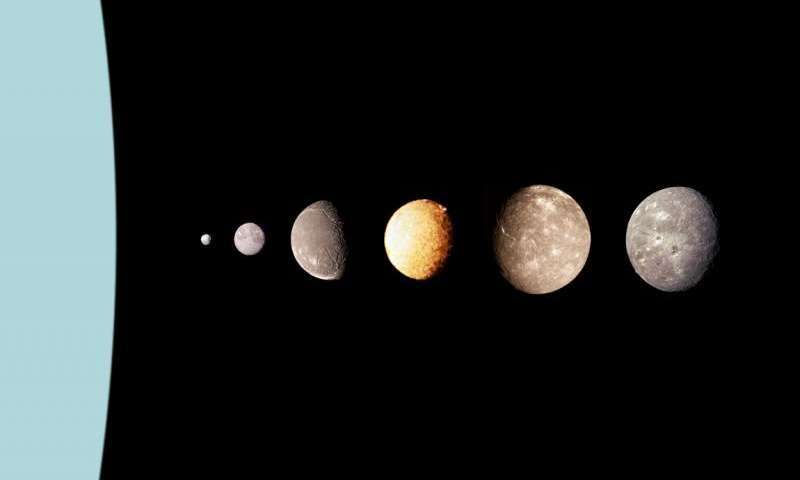
What’s the most interesting fact you know about Uranus? The fact that its rotational axis is completely out of line with every other planet in the solar system? Or that Uranus’ magnetosphere is asymmetrical, notably tilted relative to its rotational axis, and significantly offset from the center of the planet? Or that its moons are all named after characters from Shakespeare or Alexander Pope?
All of those facts (with the exception of the literary references) have come from a very limited dataset. Some of the best data was collected during a Voyager 2 flyby in 1986. Since then, the only new data has come from Earth-based telescopes. While they’ve been steadily increasing in resolution, they have only been able to scratch the surface of what may be lurking in the system surrounding the closest ice giant. Hopefully, that is about to change, as a team of scientists has published a white paper advocating for a visit from a new Flagship-class spacecraft.
The paper was spearheaded by Dr. Richard Cartwright, a research scientist at the SETI Institute, and Dr. Chloe B Beddingfield, a scientist at SETI and NASA’s Ames Research Center, who collected over 100 co-authors in support of the paper. The paper proposes a Flagship-class mission, putting its overall price tag at more than $1 billion. The team suggests that the mission should be designed and launched over the next decade in order to use a gravity assist from Jupiter that is only available once every few decades.
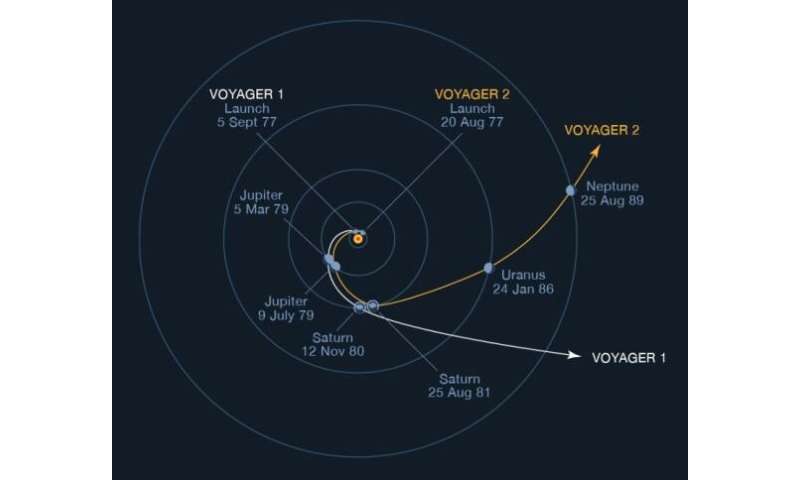
That gravity assist has two primary benefits. One is that it will get the mission there faster, allowing it to spend more time actually doing science before its power source runs out. In addition, it potentially gets the spacecraft to the Uranian system in time to see an equinox as part of an extended mission. Monitoring this very rare event would allow the science team to capture even more unique data that have been impossible to collect so far.
It’s not only the planet itself that the science team is interested in monitoring, though. Many of Uranus’ moons are unique and deserve a closer look themselves. Voyager 2 discovered 10 new moons, and more have been discovered since, bringing the total to 27, the third most in the solar system.
The moons are categorized into three distinct groups—the five classical moons, of which Titania is the biggest, the nine irregular moons, whose orbits indicate that they might be captured objects from elsewhere in the solar system, and the 13 inner or ring moons that primarily reside in Uranus’ rings.
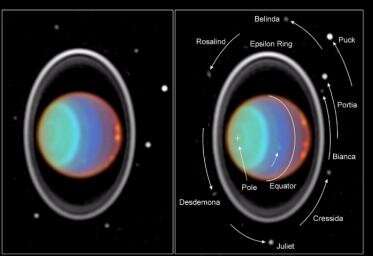
The classical moons are likely composed of rock and water ice, and have the potential to be ocean worlds, with subsurface oceans under a thick layer of ice. Those subsurface oceans may cause tectonic or cryovolcanic activity on the classical moons. There’s some indication for this on Miranda and Ariel, two of the classical moons whose surfaces appear to have been changed in the relatively recent past (geologically speaking).
Current images of their surfaces are relatively low resolution, and one of the primary goals of the proposed mission is to take higher-resolution images of the moons’ surfaces. With higher resolution comes a better understanding of the geologic features on these moons, including the number of craters, which can be used as a proxy for surface age.
If these moons do have subsurface oceans, they would be added to the list of interesting worlds for astrobiologists. That list also includes places like Enceladus, which is eerily similar to Miranda, according to Dr. Cartwright. But it is not the only interesting place in the system to look. Mab, one of Uranus’ ring moons, orbits within a diffuse and dusty ring that might be sustained by material ejected from the tiny body, which could also end up on neighboring moons. Similarly, the outer moons Titania and Oberon could be mantled by dust in-falling from Uranus’ distant irregular satellites. These sorts of dynamic interactions between the different moons of Uranus could be verified by the proposed mission.
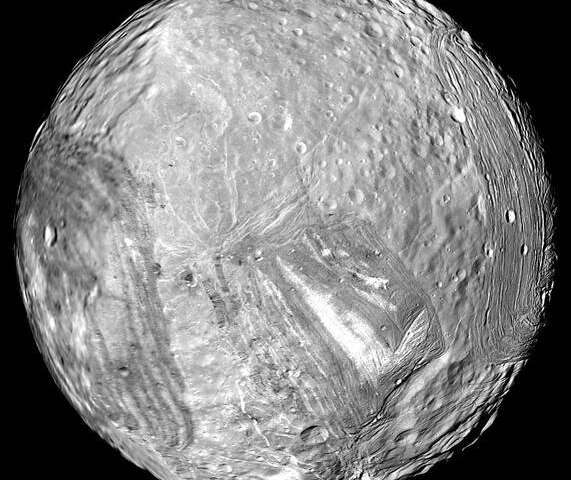
In order to verify the interactions between moons and many other intricacies of the planetary system, the mission will have to have some advanced instruments to collect all that data. Dr. Cartwright mentions there will be three main ones: a visible light camera, a magnetometer, and a near-infrared mapping spectrometer.
In addition to providing awesome pictures of the planetary system for consumption back on Earth, the visible light camera can be used to provide high-resolution images of the surfaces of the objects, as described above. It can provide insight into any recent surface activity, and it will be integral to the extended mission objective of watching seasonal change on Uranus itself.
The magnetometer will allow scientists to study interactions between the moons and Uranus’ unique magnetic field up close. A magnetometer could be used to search for salty subsurface oceans in these moons by identifying induced magnetic fields originating in their interiors. This technique was used by Galileo’s magnetometer to search for salty oceans in Jupiter’s large moons. JPL recently developed a very sensitive magnetometer that could potentially launch on this mission.
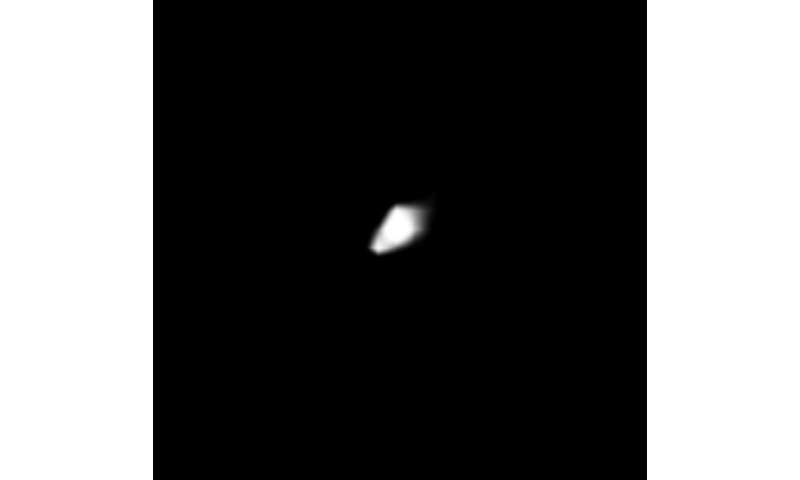
A near-infrared mapping spectrometer is a standard instrument for any modern-day space science mission and is key for understanding what molecules are present on the surfaces of Uranus’ moons. In particular, it could characterize carbon dioxide ice and ammonia-bearing material, which are geologically short lived molecules that have been detected on some of Uranus’ moons. Investigating these molecules would allow us to better understand the astrobiological potential of these satellites.
When asked why sending a mission to this outer Ice Giant, with its unknown astrobiological potential, might be a better use of Americans’ tax dollars than possible missions to other promising astrobiological candidates, Dr. Cartwright points to two main reasons.
First, there is so little data on Uranus in general, and most of that data has been collected remotely for the last 30 years. A single mission to the system, with the intent of orbiting, would exponentially increase our understanding of one of the least studied planetary bodies in the solar system.
Second, the number of questions you can answer with a single orbiter mission to Uranus far outstrips the data gathered from a trip to a single moon. There are 27 known bodies to study in the system, along with the planet itself, its rings, and its weird mangetosphere, and perhaps there are even more moons left to discover. A single orbiter would be able to collect data on all of them.
Dr. Cartwright is also quick to point out that, as part of the last decadal survey, a similar mission to the Uranus system ranked third in terms of priority. The two missions ahead of it are what became the Perseverance Mars Rover and the Europa Clipper mission, both of which are moving ahead with development. With the Uranus project next in line, the team’s hopes are high that the concept will be picked up as the next Flagship mission.
If it is picked up, the team has a bit of time in order to hit the window required to utilize the Jupiter gravity assist between 2030 and 2034. With help from the massive gas giant, the mission would expect to arrive in the Uranian system in the early to mid 2040s. That will give the mission scientists plenty of time to brush up on their Shakespeare, in case they get a chance to name some more moons.
Citation:
The moons of Uranus are fascinating enough on their own that we should send a flagship mission out there (2020, July 27)
retrieved 27 July 2020
from https://phys.org/news/2020-07-moons-uranus-fascinating-flagship-mission.html
This document is subject to copyright. Apart from any fair dealing for the purpose of private study or research, no
part may be reproduced without the written permission. The content is provided for information purposes only.
If you want to read more Like this articles, you can visit our Science category.
if you want to watch Movies or Tv Shows go to Dizi.BuradaBiliyorum.Com for forums sites go to Forum.BuradaBiliyorum.Com



